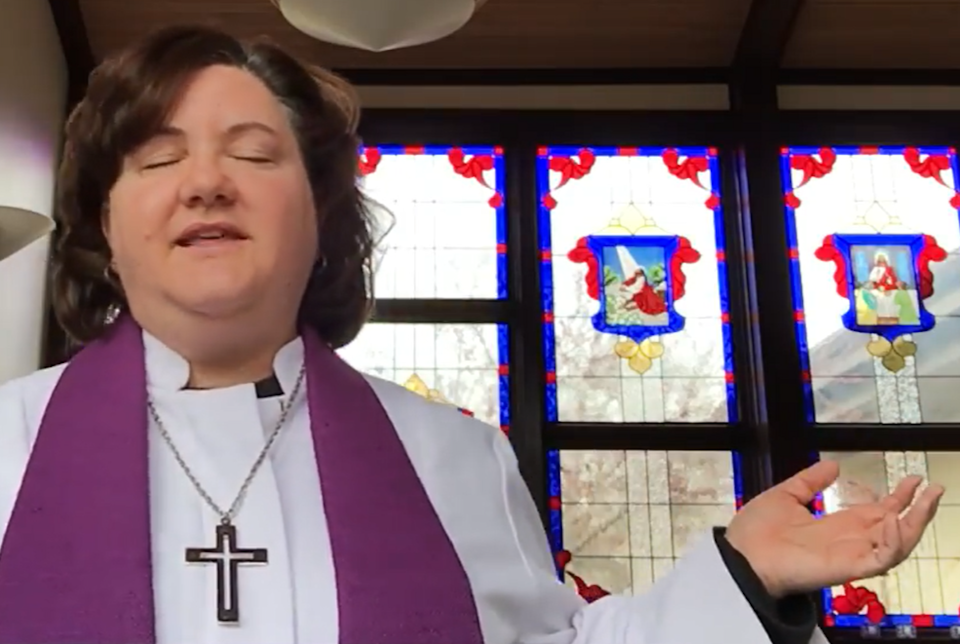On Friday, March 13, Bishop David Bard asked all Michigan churches in his care to be closed to in-person events. On Sunday, less than 48 hours later, congregations came together online.
KAY DEMOSS
Senior Content Editor
Who would have known when they left church on Sunday, March 8, 2020, that they would not be coming back through those same doors for worship for awhile? At this writing, the length of that “awhile” remains to be seen. In those days immediately following that sabbath, leaders in the government and then the church began to take serious measures around “social distancing” to attempt to slow the spread of coronavirus in the United States.
By mid-week, pastors heard questions from parishioners about worship. But individual decision-making in congregations ended at 4 pm Friday, March 13, when Bishop David Bard announced: “Given developments of the last few hours, I need to ask more of you as Michigan United Methodists. I am asking that each United Methodist church in Michigan refrain from in-person gatherings for the remainder of the month of March. We can play an important role in slowing the spread of the COVID-19 disease.”
Bard then added that this was not a call to a spiritual vacation. “I am not asking that you close the church, only asking that together we find new ways to be the church,” he explained. “Use electronic media to share in worship and Bible study. Hold the necessary meetings electronically. Care for one another with phone calls or other social media connections. Give to your church electronically or by mail.”
For some congregations with a long-history of technologically-assisted ministry, this was not a huge challenge. For others, live streaming of worship presented a host of mysteries to overcome. Churches sought out the “techies” in the congregation. They learned together. They practiced. They held their breath when their hours of worship arrived on March 15. One could almost hear a collective, “Well, here goes,” spoken softly across the land.
The Spirit was with them. For those watching on Facebook last Sunday morning, it was nothing short of a miracle, connection made possible by the internet, and the family that calls itself The United Methodist Church. Depending on who one had friended or followed, persons had the option to virtually attend not only their own but dozens of United Methodist worship services.
In the space of one hour, this author watched 26 familiar faces of pastors come on the screen, scattered between Marquette and Detroit, Flint, and Muskegon. Some worship leaders were seated alone in offices, and others stood with a handful of volunteers in the usual sanctuary space. A pastor and a helpful spouse held forth from their living room. And one preacher delivered his message from a rocking chair. There were a few long-distance surprises, like the sermon coming from missionary Robert Amundsen’s pulpit in Red Bird Mission, Kentucky. The church in the space of that 60 minutes, went from holding its breath to a breathtaking display of witness.
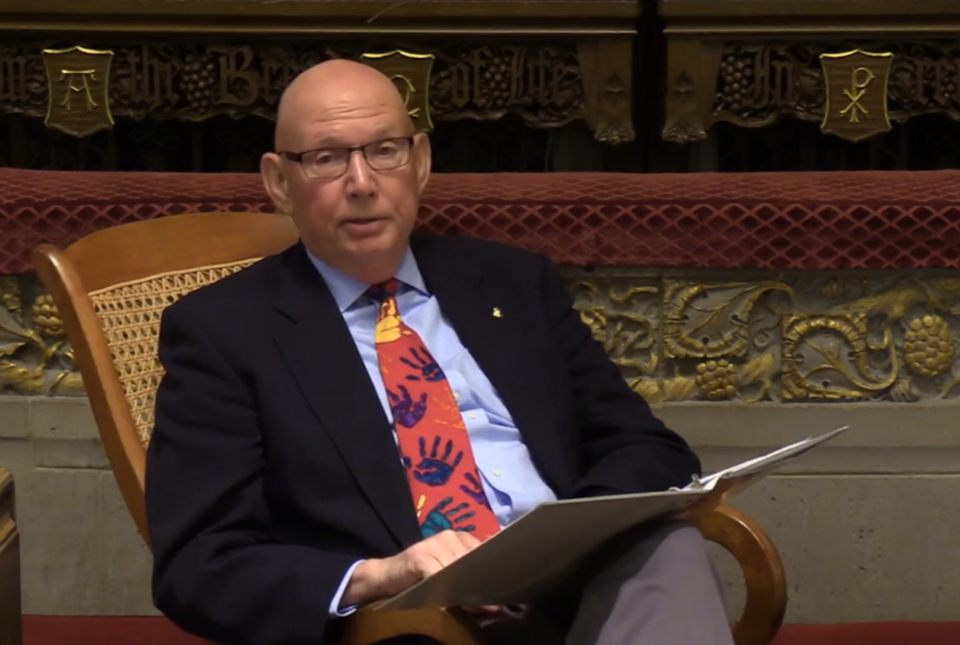
Said Bishop Bard on Facebook, “It has been my privilege to drop in on many virtual worship services this morning. Thank you, Michigan United Methodists, for your creativity and care. Thanks for your patience when some of the technology was not what we had hoped for. Thank you for continuing to find ways to be the church in this unprecedented time. We are on this journey together.”
The Rev. Pam Mathieu, commented, “Goodness, I thought I’d miss worship this morning, but instead, I’ve been to church five times! Isn’t modern technology wonderful?” The retired deacon continued, “I started with my church, Lincoln Community UMC here in Ypsilanti, which was great and very well done. Then I went to church with a couple of other Michigan Conference pastors that I know. Then, I watched Adam Hamilton at the Church of the Resurrection in Kansas City.” Mathieu concluded, “I just finished up with worship from my former church, Mt. Hope UMC in Lansing.”
One enthusiastic home-viewer of the live stream from Georgetown UMC said, “We should have PJ Church more often! Thanks, GUM!” Another traveler commented, “Through the magic of live feed, I got to attend church in Michigan while visiting my daughter in Chicago.” One who tuned in to the broadcast from Flint: Court Street commented, “The live-cast reminds all of us that we are not alone!” Cameras in houses around Michigan shared images of intergenerational audiences. There were even some pets with eyes and ears focused on TV screens.
It was televangelism of a different kind that blossomed on March 15. What did it take to make it happen? Some summoned the courage and did things they had never done before. The Rev. Tish Bowman, pastor of Portland UMC (Mid-Michigan District), relates. “While we regularly record our worship services, putting them on CDs, and sending them to the local access tv station, we have never ‘gone live.’ Since it was all so last minute, I decided to set up my i-phone and offer a message and prayer right from my home study.” Tish notes, “I practiced the day before by simply recording myself giving the message. That gave me just enough confidence to ‘go live’ the next day.” She reports, “There were many positive comments from my congregation and even a few folks I didn’t know who found us and watched. It’s a strange feeling not meeting face to face, but in these unsettling times, it’s good to be able to still connect.”
Using Facebook for worship was also a new experience for Wacousta UMC (Mid-Michigan). “When I woke up on Friday (my normal Sabbath day), the world had changed dramatically,” says Wacousta pastor Hillary Thurston-Cox. “My daughter’s school had closed. Grocery stores in Lansing were emptying. Amazing the difference a day can make.” The good news was, her sermon was written and already addressing social distancing and coronavirus measures. “After discussion with my SPRC chair, the decision was made for me to come to the church and record this sermon, then use Facebook to schedule a post that would drop at 9:30 am Sunday morning.” Hillary hesitated. “I had heard through clergy colleagues, that it was likely that live streaming would be stretched to its limit on Sunday.” She persisted. “There was no time in our smaller church (100 most Sundays) to bring in the worship team or figure out all the technical details. It was my iPhone and me in the chapel.” Hillary included prayer requests that she had received through email and added links to YouTube worship videos for songs that related to the sermon’s theme. She also included a link to a children’s message online. She considers the effort a pleasant surprise. “On an average Sunday, we see around 100 people. Now, 24 hours later, Facebook indicates we’ve reached 932 people with 416 engagements. What a grace it was!”
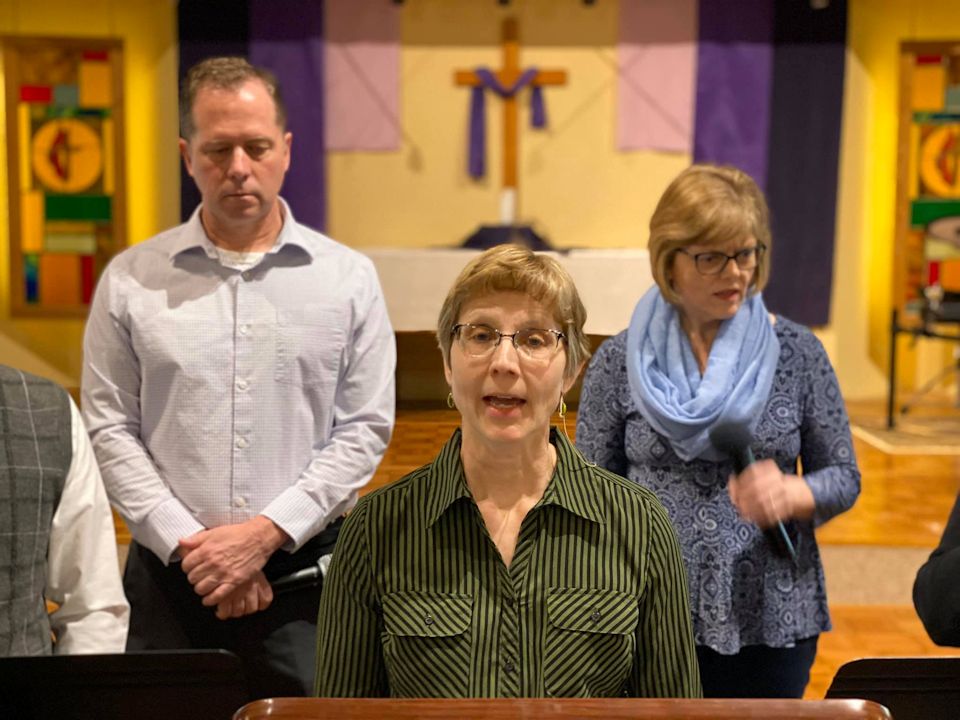
An hour away in Flint, the Rev. Jeremy Peters, his family, and a few others gathered in the sanctuary of Flint: Court Street UMC on Sunday morning. “Our goal was to give people the feeling of being in worship together. We felt like it was important for them to see the sanctuary, and to keep the order of worship as normal as possible. So, we did almost all of the things we usually do.” Jeremy’s daughter read scripture, and the lay leader shared a pastoral prayer. Their Minister of Christian Education read a children’s book for children’s time. The organist played a couple of verses of each hymn. Jeremy reports, “When it was all over, we would have loved to give each other high fives, but of course, we were all staying six feet apart!” While staff had been talking about live streaming for years, March 15 was a first-time effort. “It took the necessity of this moment to spur us to action,” Jeremy notes. The pastor says it took about 20 hours to get hardware and software together and working, and when the time came, he tweaked a setting and crashed the link to Facebook. “We shut some things down and started some things up again,” Jeremy recalls. “It was terrifying! The whole thing happened by the grace of God and the skin of our teeth.” Worth the terror? Yes. “Much of the feedback was along the lines of, ‘I had no idea how much I need this!’” And Peters adds, “One person made our day by letting us know that there were moments when she forgot she wasn’t sitting in the pews. Some of our home-bound members were reconnecting with us in worship in ways that hadn’t happened in years.”
The Rev. Steven Manskar worked with the Director of Music, Randy Burghart, to develop a Facebook Live worship time for Grand Rapids: Trinity UMC (Midwest District). “I adapted the service of Morning Prayer from The Book of Offices and Services by the Order of St. Luke,” Steven shares. “Two members of our worship band joined Randy and me for the 9 am session, recorded from the sanctuary.” They are currently in troubleshooting mode for next week. “The problem we had was the quality of sound for the music. We think the distance of musicians from the microphone in my MacBook Pro was the issue.” Nevertheless, Steven reports that feedback from the congregation was “overwhelmingly positive.”
Some churches had a little more experience with live streaming, like Greensky Hill Indian UMC (Northern Waters). They had used Facebook Live last summer to stream their Camp Meeting with keynote speaker, Paul Perez. Pastor Jonathan May explains, “When we received word from Bishop Bard, I canceled a scheduled vacation and came home to connect with our congregation and plan a worship service.” Their Lenten series, “Selah – Life in a Minor Key,” continued as planned with a lay speaker, Dan Magee, preaching. There was a challenge. “Dan’s partner recorded the sermon on an Android phone. It took hours and hours to figure out how to get the message from the phone to the Facebook page.” Again, the effort was rewarded. “We got lots of positive comments on our Facebook page,” Jonathan says, “including folks who rarely if ever, get to our worship services or events.”
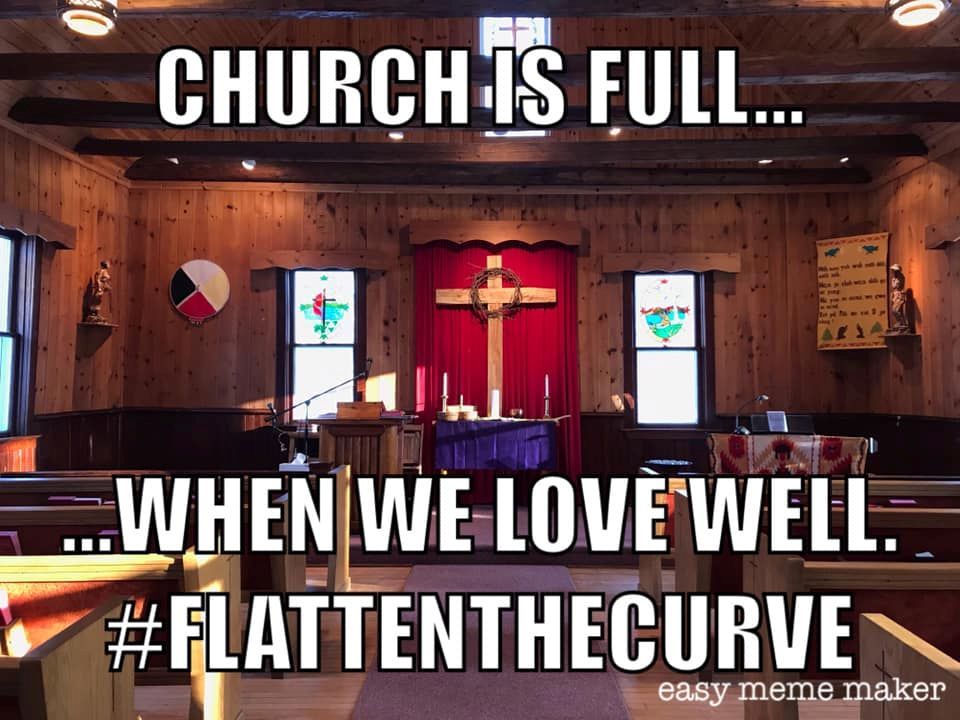
Farther north, Marquette: Hope’s (Northern Skies) worship leaders had the benefit of a “rehearsal.” The Rev. Kristy Hintz explains that “We piloted a Facebook Live experience on March 8 for two reasons. We have meant to add an interactive worship experience for a long time, but just hadn’t prioritized making it happen. And we were anticipating the possibility of the Bishop’s recommendation and wanted to give ourselves at least an opportunity to roll it out.” While the March 8 worship included the congregation, on March 15, four staff members worked the empty room. “We worked our way through the order of worship already prepared for the morning. We chose our Connection Center worship space because it has the best internet connection of our three buildings.” Kristy says they learned a lot and got great feedback “from people who found the familiar words and voices reassuring. They appreciated the sense of connection.” One Facebook worshiper suggested sending out an order of worship electronically ahead of time, including hymn lyrics, to help viewers follow along. “We are striving to be as interactive as possible, including the sharing of prayer concerns, and comments that we are receiving,” Kristy notes. She celebrated the full embrace Facebook enabled. “We have members of our congregation scattered around the country for various reasons. It was nice to hear from our members in places like Florida and Hawaii, who could be present with us.”
Of course, Facebook Live is one tool among many. The Rev. LuAnn Rourke, Port Huron First UMC (East Winds District), preached to a much-expanded radio audience on March 15. “We have a long-standing arrangement with our local station to broadcast worship every Sunday morning at 9:30,” LuAnn reports. “I know the sound of the organ playing is an important connection point for many of our folks, so I invited our organist to come and play, as usual, a prelude, and a few hymns.” LuAnn preached, and the youth director served as liturgist. LuAnn worked to make the experience interactive rather than passive. “To help listeners feel connected, I invited people to pray responsively with me, giving verbal instructions about what they should say when I gave a particular prompt. I spoke the words to familiar choruses and invited people to sing along, right where they are, even if they are the only one in the room.” Those who tuned in found the experience reassuring. “One member said, ‘I listened as I drank a hot cup of comforting coffee.’” Others were grateful to engage their imaginations as they listened. “One said, ‘It was odd not being in worship, but I’m so glad our church is positioned to reach out to so many this morning, especially when other churches are not able to.'”
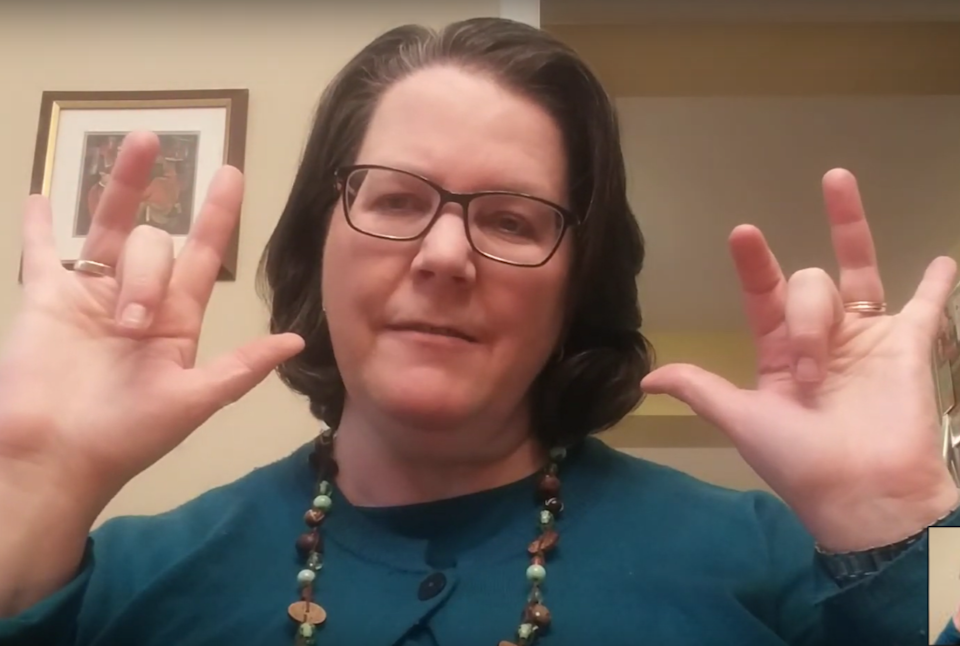
YouTube is being used creatively by Farmington: Nardin Park UMC (Greater Detroit District). “We decided not to try and live stream a worship service but rather put our energies toward something that could be more organic and sustainable during this unprecedented time,” says the Rev. Melanie Carey. “Also, we wanted to create something that could be easily done for the long haul of this crisis … something accessible and easy to navigate for the majority of our congregation and community, many of whom are tech-savvy and many who are not.” That effort to keep it simple and connect more frequently launched on March 12 as a church YouTube channel featuring a series of devotional videos called, “Spiritual Sustenance for Living of these Days.” New videos are available on Sunday, Tuesday, and Thursday mornings, but may be viewed anytime on YouTube: NardinParkUMC. The short videos are created with a cellphone and uploaded directly to YouTube. The YouTube links are posted on Nardin Park’s Facebook Page and emailed to the congregation through MailChimp. “People in the congregation and our community, and around the world, are telling us how helpful the videos have been because they feel like we are being very real with them, and they can watch them more than once,” Melanie observes. Laity will create future videos, as well as staff. “The beauty is that all someone needs to make the video is the desire to share their faith, a cell phone, computer, and internet,” Melanie concludes.
These “It worked for us” testimonies are offered to encourage those who are determined to remain in touch with their congregations during this time when in-person ministry is not possible.
There are helpful worship resources and communication guidelines in a Health Crisis Toolbox developed by The Michigan Conference. Click here to access the Toolbox.
The Rev. Mike Mayo-Moyle, IT Specialist for The Michigan Conference, has additional words of assurance. “I think that even if a church feels like they can’t do a full live stream, they could consider creating a free Zoom meeting offering 30 minutes of prayer, scripture, and a short message on Sunday morning. I think it would make a difference.” He also mentions the possibility of “a daily mini-service at noon to help people feel connected.” Such a YouTube ministry is now underway at Farmington: Orchard UMC (Greater Detroit District) with the leadership of the Rev. Amy Mayo-Moyle.
Mike passes along the names of two persons willing to provide practical assistance with live streaming. The Rev. Nick Bonsky, Associate Pastor of Orchard UMC, helped that congregation with the set-up. He is ready to advise other churches; phone 248-626-03620. Collen Godfrey, on staff at Clarkston UMC, is willing to consult about live streaming; phone 248-917-1694.
Conference Communications has compiled a list of churches that are providing worship and spiritual nurture online. It will be available in the Health Crisis Toolbox. If you know of churches to be added, contact kdemoss@michiganumc.org.
At noon on Sunday, March 15, CNN commentator Brian Stelter signed off with these words, following extensive reporting on COVID-19: “Thank God we have the technology to stay together!” Pastors and laypersons across The Michigan Conference couldn’t agree more.
~Next week … ways Michigan United Methodists are in ministry in-congregation and in-community during the health crisis.
Last Updated on October 27, 2023

